Storing the Sun
A new kind of battery invented by Jay Whitacre, a professor of materials science at Carnegie Mellon University and founder of the startup Aquion Energy, could make renewable electricity more practical and economical around the world. Aquion is about to start full-scale production of the batteries at a new factory in Mount Pleasant, Pennsylvania.
Whitacre says his batteries’ most promising near-term application lies in storing energy from solar panels or other renewable sources in off-grid homes or rural areas, providing a much cheaper 24-hour power source than a common alternative: diesel power. Lead-acid batteries are used for this purpose today, but they are toxic and require air-conditioning to avoid deterioration in some climates, raising costs.

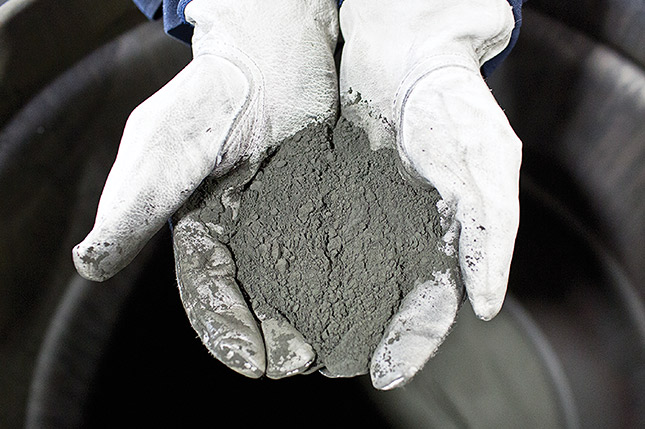
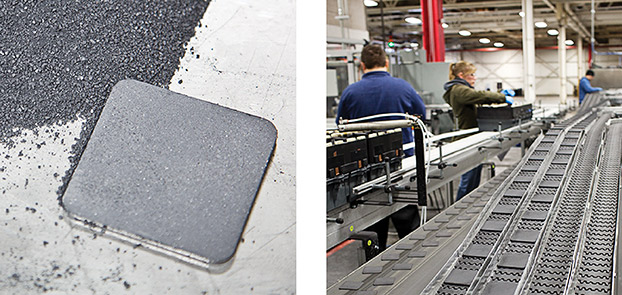
R+B: The wafers move along an assembly line and are arranged by robot arms for easy stacking.

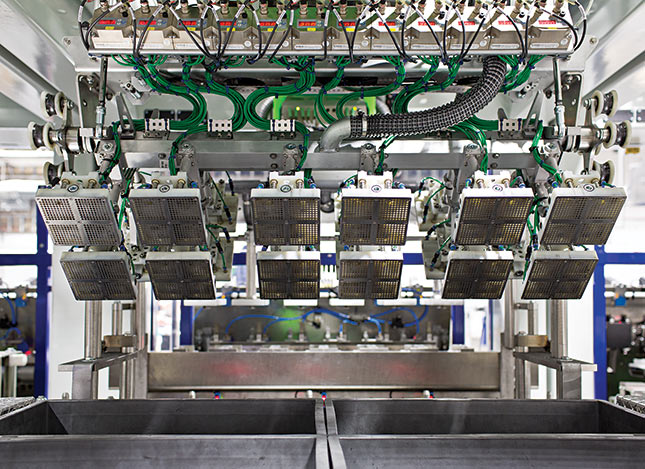

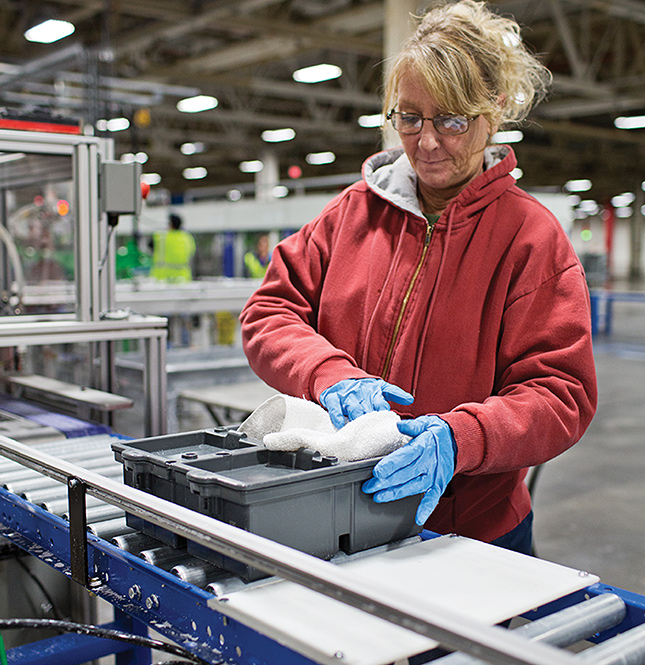
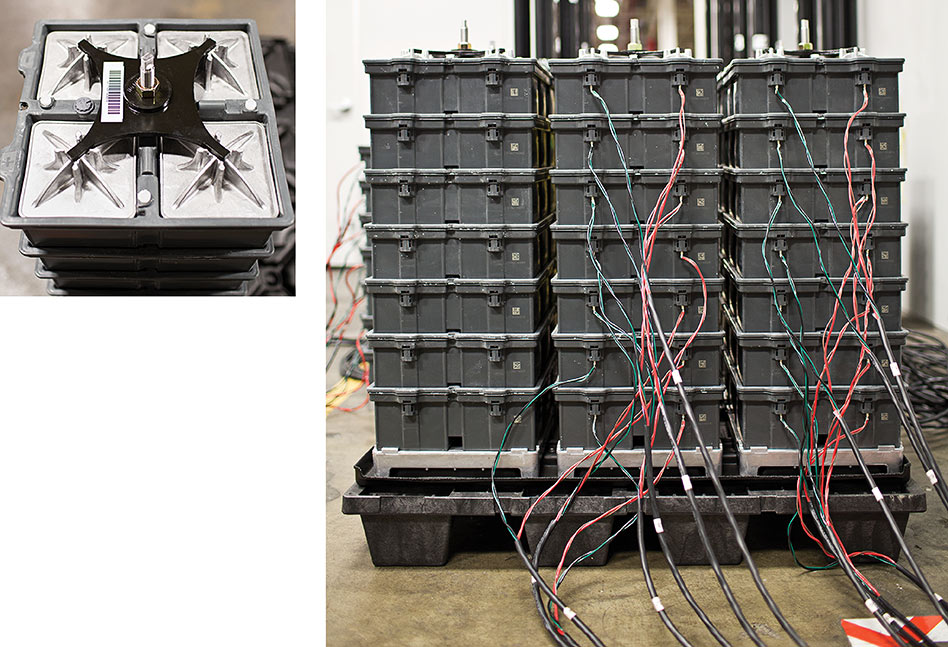
R: The stacks are arranged on pallets and connected to electrical leads for testing.
Whitacre’s batteries are expected to last twice as long as lead-acid batteries and cost about the same to make. They won’t require air-conditioning and will use nontoxic materials. Electrical current in the battery is generated as sodium ions from a saltwater electrolyte shuttle between manganese oxide–based positive electrodes and carbon-based negative ones.
One place the battery could make a big difference: in poor regions of the world that lack an existing electric grid. By 2030, one billion people are expected to get electricity for the first time. That will mean a lot more use of fossil fuels unless renewable power options are as cheap, safe, and reliable as possible. If “even a fraction of that billion can use solar because of our batteries,” Whitacre says, the company will be able to reduce not only carbon dioxide emissions but also local pollution from diesel generators.
To match the cost of lead-acid batteries, which are among the cheapest types, Whitacre uses inexpensive manufacturing equipment repurposed from the food and pharmaceutical industries. Hydraulic presses originally designed to make aspirin pills stamp out wafers of positive and negative electrode materials, and robot arms built to wrap chocolates are used to package electrode wafers with foils that act as current collectors. At the end of the line, the briefcase-sized batteries are stacked and bolted together. A pallet of 84 batteries, about a meter tall, will store 19.2 kilowatt-hours of electricity. Whitacre says you’d need about 20 such pallets to serve a village of 200 people in a poor country. Two pallets would power a U.S. home for a day.
The technology has its limits. It is best suited for slow and steady operation, not rapidly charging and discharging large amounts of power as some utilities require. And while the batteries are cheaper than other kinds, pairing them with solar panels still can’t beat the economics of conventional power plants in most areas. That is why Whitacre is focusing initially on regions without an existing electricity grid. Aquion has already started shipping batteries to customers for evaluation. The company expects to start full-scale production by this spring, making enough batteries each year to store about 200 megawatt-hours of electricity—enough for roughly 150 solar-powered villages. The factory in Pennsylvania could be replicated in other countries. “If our technology proves out, we won’t be able to make them fast enough,” Whitacre says.
This story was updated on March 3 to correct the number of pallets of batteries that would be needed to serve 200 people. The figure is 20, not 60.
Deep Dive
Climate change and energy
The problem with plug-in hybrids? Their drivers.
Plug-in hybrids are often sold as a transition to EVs, but new data from Europe shows we’re still underestimating the emissions they produce.
Harvard has halted its long-planned atmospheric geoengineering experiment
The decision follows years of controversy and the departure of one of the program’s key researchers.
Why hydrogen is losing the race to power cleaner cars
Batteries are dominating zero-emissions vehicles, and the fuel has better uses elsewhere.
Decarbonizing production of energy is a quick win
Clean technologies, including carbon management platforms, enable the global energy industry to play a crucial role in the transition to net zero.
Stay connected
Get the latest updates from
MIT Technology Review
Discover special offers, top stories, upcoming events, and more.